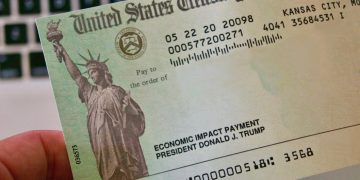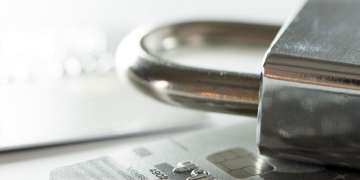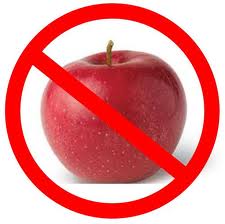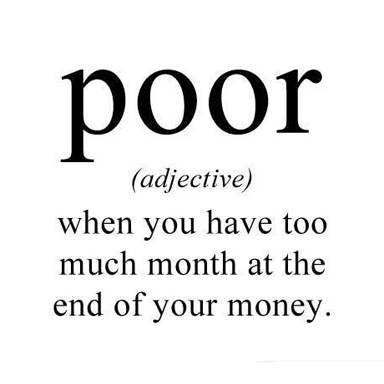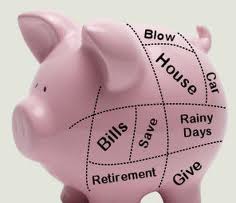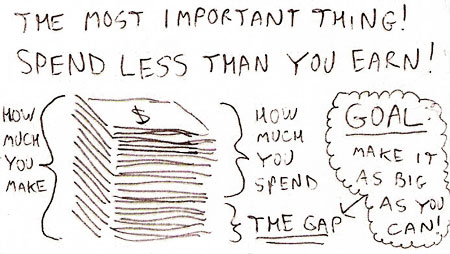Last week was the introduction to my Get Out of Debt in 2012 course. We all resolved, together, to get on the path to debt freedom this year. I’m happy to report that many of you are already reducing your debt nicely. Some people are down to $400, some to $20,000 and some just have the lone house payment left. That’s awesome! But we had homework, and like any good lesson, it’s time to hand that homework in.
Your homework last week was to gather together all of your debts and write it down. As I mentioned, it can be hard to get a real perspective when you think of your debt in its parts and not as the sum total. We’ll actually end up breaking apart the debt in the future, but for now, you need to see the entire total together. It’s like gathering up all of cousins during the holidays.
Okay, so you have your debt together. You’ve confronted the number. Maybe you were shocked. Maybe you cried. Maybe you decided that it wasn’t so bad after all. Whatever your reaction, you now know a number. We need to get you from here to zero.
If all you have left if your mortgage debt, read: >Paying off Your Home: The Biweekly Mortgage and How To Save Thousands of Dollars On Your Mortgage Without Refinancing. Everyone else, let’s get to lesson 2.
Time to Make the Budgets
This lesson is all about crafting a basic BUDGET. I’ve put it in bold because most of us hate to do that. I don’t like being told how much I can spend any more than the next guy, but unless you have a rich relative to bail you out, you really can’t spend more than you earn. You’ll be setting yourself up for disaster.
A basic budget has to have three things: Your income, your expenses and your savings. Without any of the three, you are pretty much doomed to failure.
Your Income
Let’s talk about your income, since it’s the easiest one to get out of the way. If you have a salary, this one is very easy for you. Your paycheck will not change from one pay period to the next and you know exactly when you’re getting paid. Go ahead and write down your monthly take home pay (after all taxes and deductions in your income area. This also hold true for those collecting unemployment, social security or disability. You are more than likely getting a fixed amount every week or month. Use your monthly number for our calculations.
If you work irregular schedules or shifts, this can be difficult for you. You might have more hours one week and less another week. You are the hardest person to craft a budget for, but it can still be done. I would suggest that you look at your paychecks for the past 4 weeks and then average out the number of hours that you work per week. If you don’t have your pay stubs, no worries. Check your bank account for your direct deposits. Take the total number of your pay for 4 weeks and divide that by 4. You should get a number which averages out to your weekly take home pay. We’re going to use this weekly number for you.
Let’s move on to your debt.
Your Debt
Do you remember your homework? You’re going to need for this area of our budget. This was why getting to know your debt a little bit more intimately was very important.
In the debt area, you are going to list all of your minimum payments for each of your creditors on each row. You should also include recurring bills such as your rent or mortgage payment, your car insurance, your utilities (electricity, gas, phone), your commuting costs, etc. These are the expenses that you have to pay every single month, but that you might forget about. Don’t include one-off irregular things like the $5 that you borrowed from your sister for lunch. For the purposes of our debt reduction plan, we don’t need to include it, but you really should pay your sister back.
Savings
After adding up your income and subtracting all of your minimum payments, the amount left over should be your savings every month, but it probably isn’t. You know why? Because life happens. Because we spend more than we realize. Because you had a craving for a $4.39 caramel macchiato from Starbucks and had to get the Rice Crispies treat sitting in the glass case because you skipped lunch and now you’re starving. Don’t pretend that I’m the only one.
I’m not going to lecture you because I do the same thing. Somehow, my entire paycheck used to miraculously disappear before I received the next paycheck and I had no idea where the money went…until I was forced to rely on just cash.
Develop A System That Works for You
Let’s just say that New York State and I had a minor (read: VERY MAJOR) tax dispute and I was afraid to put my paycheck into my bank account. Instead I walked over to the issuing bank (easy to do in New York City) and cashed my paycheck. Then, I would split my money into different piles and place them into envelopes. I had one pile of cash for my payments to my credit cards and to my home equity loan. I had another pile for my car note, gas and insurance. Another for my recurring bills such the one for my cell phone. What was left over was for food, transportation, incidentals and entertainment.
I found that when I actually SAW the money and physically had my entire paycheck in my hands, it forced me to recognize that this was all that I had for the next two weeks. When my paycheck was deposited into my checking account and the bills removed electronically, and cash pulled from my ATM card at will, I just did not realize how much I was spending. Remember that old saying, “easy come, easy go”? It was only after working with just cash that I realize that this was exactly how I had been treating my money. Because I didn’t physically SEE it dwindling, it was just a number in my account.
After working with just cash for two months, I found that I usually had some cash left over. It wasn’t much, but it was something. I was making more conscious decisions about my money than I had ever made before. I saw the benefit of spending less or thinking before I made a purchase because I wanted my last pile to last as long as possible. There’s nothing more embarrassing than having to borrow money just to get to work.
What I used is called the envelop or jar (where you divide your money in different jars) method. Tracking all of my expenses on a spreadsheet or on an app just didn’t appeal to me, but it might work for you. Since we are all different, I encourage you to find a system that works for you and your family. But try this seeing is believing thing. Much like seeing your debt total all in one place, it really does give you some serious perspective.
Homework
This lesson’s homework is super simple. You must develop a budgeting method that works for you and your family, and then try it out for the next two weeks. I’m not sending you along on your merry way without any help. If you want some information on how to craft a budget, I have some resources listed below for you.
Want a preview on what we’re doing in the next lesson? Watch the video below.
If at any time you’d like to catch up to this course, or if you want to begin from lesson 1, you can always select the “Get Out Of Debt Course” under categories. Everything will be nicely organized for you in order of appearance. Remember, let’s make this a GOOD 2012.
Give me some feedback. Have you tried this method before? Will you try it?

